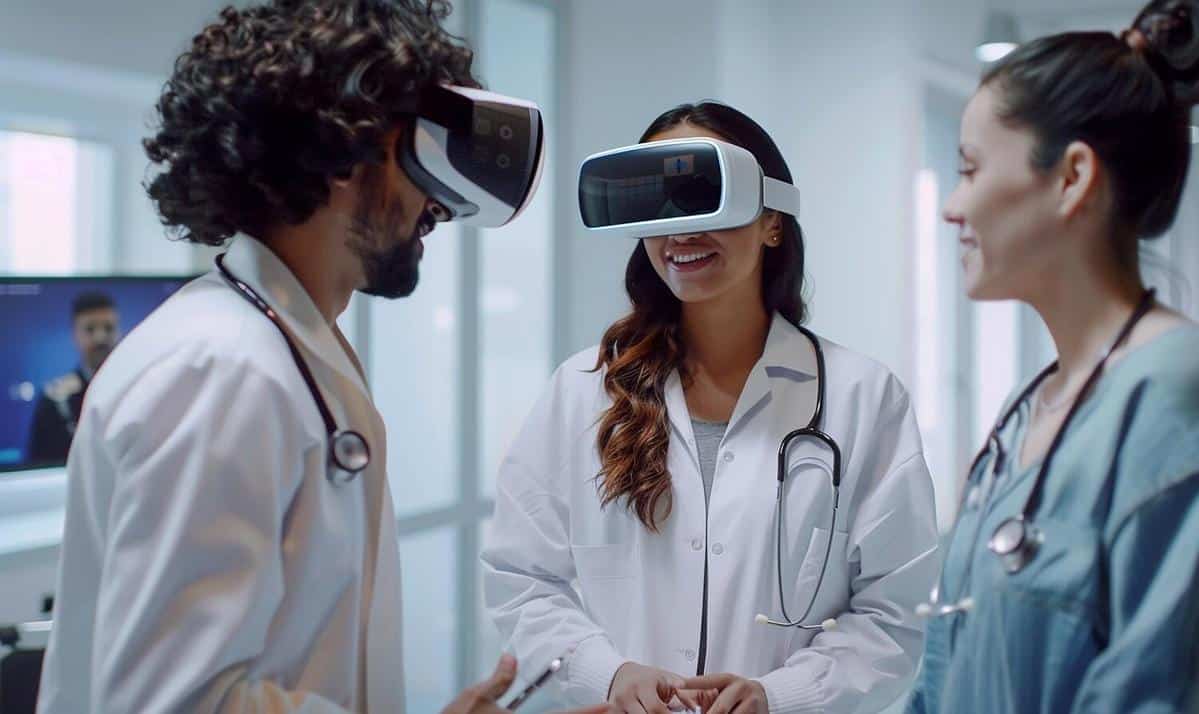
Virtual Reality in Medicine: A New Era of Training and Treatment
Virtual reality (VR) is transforming the medical field, offering innovative solutions for training healthcare professionals and treating patients, ushering in a new era of possibilities.
Exploring Virtual Reality in Medicine
Virtual reality is no longer confined to the realms of gaming and entertainment; it has found a significant place in medicine. VR is revolutionizing medical training and patient treatment, making complex procedures more accessible and comprehensible.
Expert Insights on VR in Medicine
Dr. Michael Gervais, a leading expert in medical technology, states, “Virtual reality provides an immersive experience that traditional methods can’t match, enhancing both understanding and skill acquisition.” This sentiment is echoed by many in the medical community who see VR as a valuable tool.
Statistics and Research
A recent study published in the Journal of Medical Internet Research discovered that VR-based training improved surgical performance by 230% compared to traditional training methods. These findings underscore the potential of VR to enhance medical education.
Real-World Applications
Consider the case of a medical student using VR simulations to practice delicate surgeries. These simulations allow for repeated practice in a risk-free environment, building confidence and competence before they ever touch a real patient.
Actionable Tips for Implementing VR
- Start by identifying areas where VR could enhance learning or treatment in your practice.
- Seek platforms that offer comprehensive VR solutions tailored to medical needs.
- Incorporate VR gradually to allow staff and patients to acclimate to the technology.
Comparison Table: Traditional vs. VR Medical Training
| Aspect | Traditional | Virtual Reality |
|---|---|---|
| Cost | High | Variable |
| Risk | Patient involvement | No real patients |
| Repetition | Limited | Unlimited |
| Immersion | Low | High |
| Feedback | Delayed | Instant |
| Accessibility | Geographically limited | Global |
| Adaptability | Fixed curriculum | Customizable scenarios |
| Engagement | Moderate | High |
FAQ
How does VR enhance medical training?
VR allows for a highly immersive and interactive learning experience, enabling medical professionals to practice and refine their skills in a controlled, risk-free environment.
Can VR be used for patient treatment?
Yes, VR is used in pain management, physical therapy, and even mental health treatment, offering patients engaging and effective therapeutic options.
Conclusion
Virtual reality is reshaping the landscape of medicine, providing groundbreaking opportunities for training and treatment. As this technology continues to evolve, its potential to improve medical outcomes and enhance patient care becomes even more significant. Embracing VR in your practice could be a step towards a more innovative and effective healthcare future.